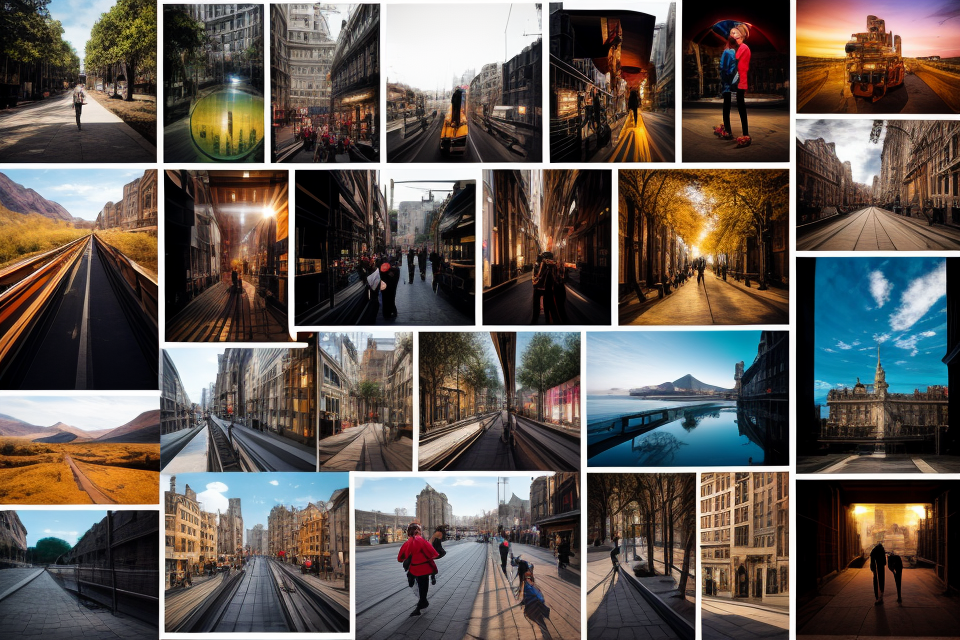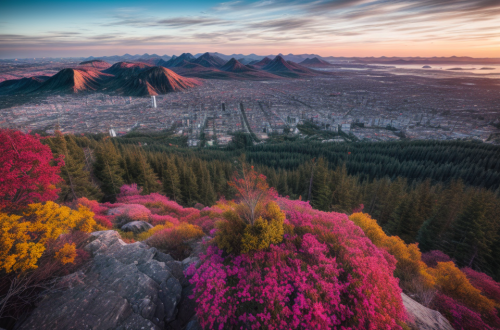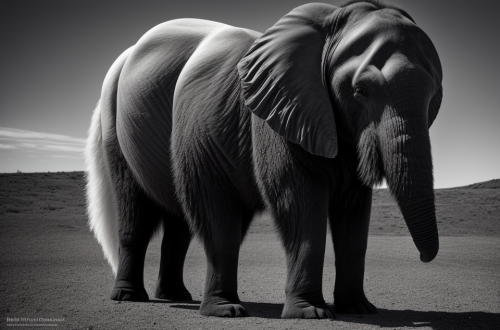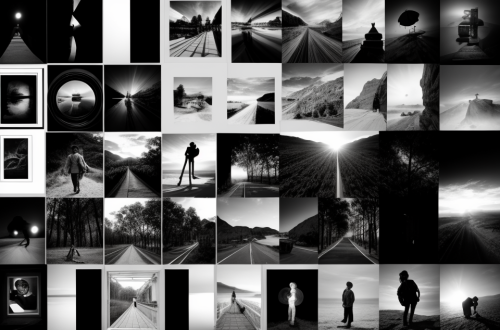Photography is a unique art form that allows us to capture and preserve memories, emotions, and moments in time. But what makes a photograph truly stand out? The answer lies in the photographer’s style. Your photography style is the distinctive way you approach and convey your subjects through your lens. It’s the combination of your vision, creativity, and technical skills that sets you apart from other photographers. In this comprehensive guide, we’ll explore the different elements that contribute to your photography style and provide tips on how to discover and develop your own unique style. So, whether you’re a seasoned photographer or just starting out, get ready to embark on a journey of self-discovery and creative expression.
Understanding the Basics of Photography Styles
Types of Photography Styles
There are numerous types of photography styles that photographers can adopt and excel in. Each style has its own unique characteristics, techniques, and approaches that photographers can learn and master to create compelling images. In this section, we will explore the different types of photography styles, their key features, and what sets them apart from one another.
Traditional Photography
Traditional photography is a classic style that emphasizes the technical aspects of photography, such as composition, lighting, and exposure. This style often involves the use of traditional film cameras and darkroom processing techniques to create images with a timeless and classic look. Traditional photographers typically focus on capturing the essence of their subjects through careful attention to detail, such as sharp focus, proper exposure, and rich colors.
Fine Art Photography
Fine art photography is a style that blurs the lines between photography and other forms of art, such as painting and sculpture. Fine art photographers use photography as a medium to express their artistic vision and create images that are not necessarily meant to depict reality but rather evoke emotion and convey a message. This style often involves experimentation with techniques such as manipulation, abstraction, and montage to create images that are both visually stunning and intellectually stimulating.
Photojournalism
Photojournalism is a style that captures events and news stories through photographs. This style is all about telling a story through images, capturing the essence of a moment or event, and conveying information to the viewer. Photojournalists often work for newspapers, magazines, or online publications, and their images are meant to inform, educate, and sometimes provoke action. This style requires a deep understanding of composition, lighting, and storytelling techniques to create powerful and impactful images.
Landscape Photography
Landscape photography is a style that captures the beauty and majesty of the natural world. This style involves capturing breathtaking vistas, sweeping panoramas, and intimate details of the landscape. Landscape photographers often seek to capture the essence of a place, its mood, and its unique character. This style requires a deep understanding of light, color, and composition to create images that are both visually stunning and emotionally resonant.
Portrait Photography
Portrait photography is a style that captures the essence of a person’s character, personality, and spirit. This style involves creating images that reveal the subject’s inner world, their emotions, and their unique qualities. Portrait photographers often work in studios or on location, using lighting, posing, and composition to create images that are both flattering and revealing. This style requires a deep understanding of human psychology, as well as technical skills in lighting, posing, and post-processing.
Documentary Photography
Documentary photography is a style that captures real-life situations and events, often with the aim of raising awareness or promoting social change. This style involves creating images that are both informative and emotionally engaging, telling a story and conveying a message to the viewer. Documentary photographers often work for non-profit organizations, media outlets, or on personal projects, and their images are meant to inspire, educate, and sometimes provoke action. This style requires a deep understanding of composition, lighting, and storytelling techniques, as well as a commitment to social justice and a keen eye for detail.
Factors That Influence Your Photography Style
Personal Experiences
Personal experiences play a significant role in shaping your photography style. Events, places, and people that you have encountered throughout your life can all contribute to the way you perceive and capture the world around you. Your personal experiences can influence the themes, subjects, and emotions that you choose to capture in your photographs.
Inspiration
Inspiration is another crucial factor that influences your photography style. It can come from various sources, such as other photographers, art, music, or literature. Being inspired by different genres, styles, and techniques can help you develop your unique vision and voice as a photographer. It is essential to continually seek inspiration and explore new ideas to keep your photography style fresh and evolving.
Cultural Background
Your cultural background can also shape your photography style. Cultural values, beliefs, and traditions can influence the way you see and interpret the world. Your cultural background can impact the subjects you choose to photograph, the way you compose your images, and the messages you convey through your photographs. By understanding your cultural background, you can use it as a tool to express your unique perspective and identity as a photographer.
Equipment and Techniques
Equipment and techniques are practical factors that can influence your photography style. The type of camera, lenses, and other equipment you use can affect the way you capture and create images. Different techniques, such as lighting, composition, and editing, can also shape your photography style. Experimenting with different equipment and techniques can help you discover your unique style and develop your skills as a photographer. It is essential to find the right balance between the practical aspects of photography and your personal creative vision.
Exploring Your Own Photography Style
Finding Your Inspiration
Finding your inspiration is a crucial step in discovering your own photography style. Inspiration can come from a variety of sources, including your own personal experiences, your interests and passions, and the work of other photographers.
Identifying Your Passion
One way to find your inspiration is to identify your passion. What are the things that excite you and make you want to pick up a camera? Is it nature, people, architecture, or something else entirely? Once you have identified your passion, you can start to explore different ways to capture it through photography.
Experimenting with Different Techniques
Another way to find your inspiration is to experiment with different techniques. This can include trying out different lenses, adjusting your camera settings, or using different editing software. By experimenting with different techniques, you can discover new ways to capture and express your ideas through photography.
Seeking Inspiration from Other Photographers
Seeking inspiration from other photographers is another great way to find your own style. Look at the work of photographers whose style you admire, and try to understand what it is that draws you to their images. Is it the composition, the lighting, or the subject matter? By studying the work of other photographers, you can gain new ideas and techniques that you can incorporate into your own photography.
Remember, finding your inspiration is an ongoing process. As you continue to explore your own photography style, you will discover new sources of inspiration and new ways to express yourself through your images.
Developing Your Unique Style
Identifying Your Strengths
Developing your unique style in photography is an essential aspect of establishing yourself as a photographer. The first step in this process is identifying your strengths. To do this, consider the following:
- What type of photography do you enjoy the most?
- What are your favorite subjects to photograph?
- What type of mood or emotion do you want to convey through your photographs?
- What technical skills do you excel at?
By identifying your strengths, you can begin to develop a style that is unique to you and reflects your passion for photography.
Building Your Portfolio
Once you have identified your strengths, the next step is to build your portfolio. Your portfolio should showcase your best work and demonstrate your unique style. It is essential to choose a variety of images that represent your skills and interests.
Consider including a mix of different types of photographs, such as landscapes, portraits, and still-life images. Ensure that your portfolio is well-organized and easy to navigate, with clear titles and descriptions for each image.
Defining Your Aesthetic
Defining your aesthetic is a crucial step in developing your unique style. Your aesthetic refers to the visual elements that make up your photographs, such as color, composition, and lighting. Consider the following when defining your aesthetic:
- What type of colors do you prefer to use in your photographs?
- What type of composition do you find most appealing?
- What type of lighting do you enjoy working with?
By defining your aesthetic, you can create a cohesive body of work that reflects your unique style and vision.
Mastering Your Craft
Practicing Regularly
To master your craft as a photographer, it is essential to practice regularly. This means taking your camera with you wherever you go and shooting as often as possible. By doing this, you will develop a better understanding of your camera’s settings and capabilities, and you will also become more comfortable with framing and composition. It is important to note that practice does not make perfect, but it does make progress. Keep shooting, and over time, you will see improvements in your work.
Learning from Mistakes
No one is perfect, and that is especially true when it comes to photography. Every photographer makes mistakes, and it is essential to learn from them. Take the time to review your images and identify areas where you could have improved. Consider what went wrong and how you can prevent the same mistake from happening again in the future. Learning from your mistakes will help you grow as a photographer and will ultimately lead to better images.
Attending Workshops and Seminars
Attending workshops and seminars is an excellent way to master your craft as a photographer. These events provide an opportunity to learn from experienced professionals and to gain insight into the latest techniques and trends in the industry. They also offer a chance to network with other photographers and to gain inspiration from their work. Whether you are just starting out or are an experienced photographer, attending workshops and seminars can help you take your skills to the next level.
Creating a Consistent Brand
Defining Your Brand
Creating a consistent brand is crucial in establishing a strong and recognizable identity as a photographer. This involves developing a unique visual style that reflects your personality and the type of photography you specialize in. To define your brand, consider the following factors:
- Your unique perspective and vision
- The genre or type of photography you specialize in
- The mood and emotions you want to evoke in your audience
- The target audience you want to reach
Once you have a clear understanding of these factors, you can start creating a visual identity that reflects your brand. This includes choosing a color scheme, font, and logo that represent your style and aesthetic.
Creating a Portfolio Website
A portfolio website is an essential tool for showcasing your work and establishing your brand as a photographer. It serves as an online gallery that potential clients and customers can browse to get a sense of your style and the type of photography you offer.
When creating your portfolio website, keep the following tips in mind:
- Choose a platform that suits your needs and budget
- Organize your portfolio in a clear and logical manner
- Use high-quality images that showcase your best work
- Include a brief bio and introduction about yourself and your photography style
- Include a contact form or information on how to get in touch with you
Building a Social Media Presence
Social media platforms like Instagram, Facebook, and Twitter can be powerful tools for promoting your brand and connecting with potential clients. By regularly posting your work and engaging with your followers, you can build a community of people who are interested in your photography style.
To build a strong social media presence, consider the following tips:
- Choose the platforms that align with your target audience and the type of photography you specialize in
- Post regularly and consistently to keep your followers engaged
- Use hashtags to increase visibility and reach a wider audience
- Engage with your followers by responding to comments and messages
- Collaborate with other photographers and influencers in your niche to expand your reach and build relationships.
Recap of Key Points
- Start by taking photographs of everything and anything that catches your eye, and experiment with different genres, techniques, and styles.
- Study the work of other photographers, and look for common themes, styles, and techniques that appeal to you.
- Consider the type of photography that you want to pursue, and the message or emotion that you want to convey through your images.
- Practice regularly, and seek feedback from others to help you refine your style and technique.
- Experiment with different perspectives, angles, and lighting conditions to find your unique visual voice.
- Finally, have fun and enjoy the process of discovering and developing your own photography style.
Embracing Your Photography Style
Embracing your photography style means accepting and appreciating the unique way you see and capture the world around you. It’s about acknowledging your strengths and weaknesses, and using them to create images that are true to who you are as a photographer. Here are some tips to help you embrace your photography style:
Be Authentic
Being authentic means being true to yourself and your own unique perspective. Don’t try to copy other photographers or conform to a certain style. Instead, find what inspires you and use it to guide your photography.
Embrace Your Strengths
Focus on the things you do well and that make your images unique. Whether it’s your use of light, composition, or subject matter, find ways to showcase your strengths in your photography.
Work on Your Weaknesses
No one is perfect, and there’s always room for improvement. Identify areas where you need to grow and work on them. This might mean taking classes, practicing new techniques, or seeking feedback from others.
Stay True to Your Vision
Remember that your photography style is an expression of who you are as a photographer. Stay true to your vision and don’t let others dictate how you should create your images.
Keep Learning and Experimenting
Photography is a lifelong journey, and there’s always something new to learn and discover. Keep learning and experimenting with different techniques and styles, and don’t be afraid to step outside your comfort zone.
By embracing your photography style, you’ll be able to create images that are truly unique and reflective of who you are as a photographer.
FAQs
1. What is photography style?
Photography style refers to the unique way a photographer captures and presents their images. It encompasses various elements such as composition, lighting, subject matter, and post-processing techniques. Each photographer has their own distinct style that reflects their personal vision and creative approach.
2. How do I discover my photography style?
Discovering your photography style involves exploring different techniques, experimenting with various genres, and finding inspiration from other photographers. One way to start is by looking at your own photographs and identifying the common themes, subjects, and techniques that you use repeatedly. You can also seek feedback from others and participate in photography communities to gain a better understanding of your style.
3. Is it necessary to have a specific photography style?
Having a specific photography style is not necessary, but it can help you to develop a unique voice and distinguish yourself from other photographers. However, it’s important to remember that photography is a creative medium, and there is no one “right” way to approach it. Experimentation and exploration are essential to finding your own style and growth as a photographer.
4. How can I develop my photography style?
Developing your photography style involves a combination of practice, experimentation, and exploration. One way to start is by identifying the elements of photography that you enjoy the most, such as composition, lighting, or portraiture, and focusing on developing your skills in those areas. You can also seek inspiration from other photographers, participate in photography communities, and seek feedback from others to help you refine your style.
5. Can I change my photography style?
Yes, you can change your photography style over time as you continue to grow and evolve as a photographer. Photography is a dynamic and ever-changing medium, and it’s natural for your style to evolve and adapt to new influences and experiences. However, it’s important to stay true to your own vision and creative voice, even as you explore new techniques and styles.





